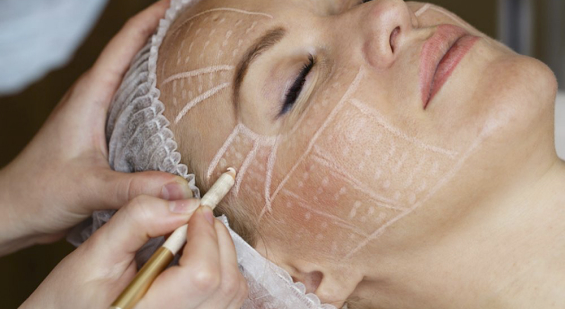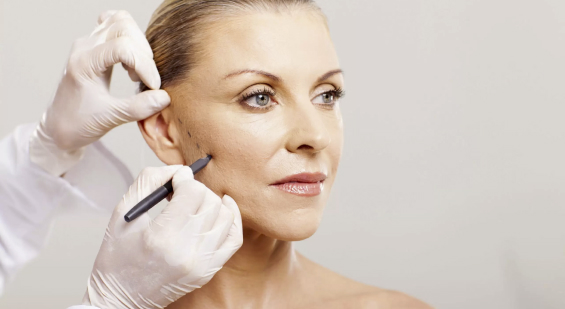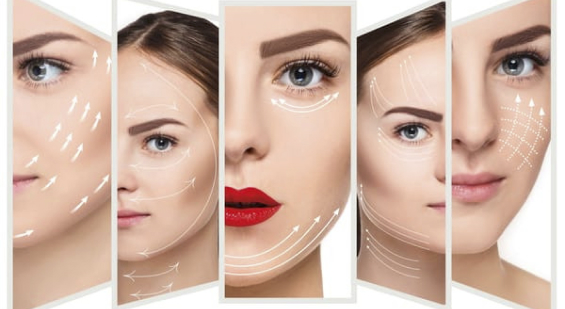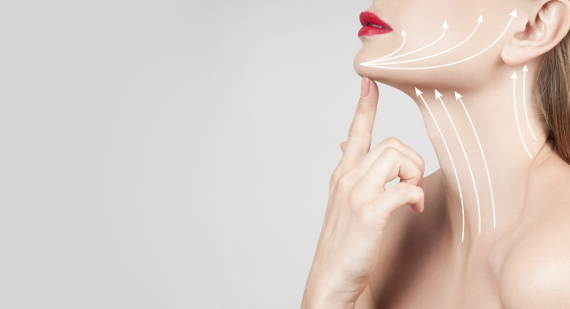
Face lift
Facelift, also known as rhytidectomy, is a surgical-procedure that lifts and tightens up facial tissue, giving your face a more youthful appearance. The procedure can reduce sagging or wrinkling of the skin on the cheeks and jawline area, as well as other age-related changes in the face shape.
During a facelift, a flap of skin on each side of the face is pulled back and the tissue under the skin is surgically altered to restore the contour of the face giving a more youthful appearance. Before the flap is sutured and closed, the excess skin is removed.
Neck lift or platysmaplasty is often performed as part of a facelift to reduce fat deposits and sagging skin on the neck.
A facelift does not reduce fine lines or wrinkles in your skin or damage caused by sun exposure.
What is the procedure for a facelift?Facelift varies depending on your desire result.
Traditionally, an incision is made at the hairline near the temples, the incision runs in front of the ear, down of the earlobe, and then back to the lower scalp behind the ears.
Fat and excess skin may be removed or redistributed from the face. The underlying muscles and connective tissue are rearranged and tightened. If there is minimal sagging on the skin, a "mini" facelift may be performed as it involves shorter incisions.
If a neck lift is performed next to a face lift, the excess skin and fat from the neck will also be removed. The skin of the neck will get tightened and pulled up and back. This is often done through an incision just below the chin.
The incisions are often made with solvable threads. In some cases, you may need to visit the surgeon again to remove the stitches. Incisions are made to blend with your hairline and facial structure.
After surgery, surgical drainage tube and bandages wrap around your face are often given.
The type of facelift and technique that is appropriate for you will be decided by your doctor based on your facial needs, skin condition, age, degree of sagging, and gender.
Types Of Facelift
Full Facelift Surgery
Is a surgical procedure that takes about 3 to 4 hours under general anaesthesia. In a full facelift, the incision starts at the temples and extends along the hairline to the back of the earlobes. Unlike a mini facelift, this procedure also involves the upper part of the face, namely the temples.
The appropriate type of facelift will be decided based on the needs of your face and the opinion of your doctor.


Mini Facelift Surgery This is a surgical procedure that takes about 2 hours under general anaesthesia. In a mini facelift, the incision starts at the front of the ear and extends behind the earlobe. Mini facelift surgery essentially targets sagging skin on the jawline and cheeks, which is why the procedure is also called a lower facelift.

Mid Facelift Surgery It is also known as cheek lift. Mid facelift surgery is performed to lift back the cheeks for a youthful appearance and to create a well-defined face that enhances the appearance. Incisions are made on the eyelids to tighten the cheeks.


Brow Lift It is also known as brow lift. Brow lift surgery is performed to minimise wrinkles, improve frown lines, lift sagging eyebrows and bring them to a more youthful position. Incisions are made above the forehead within the hairline.
Temple Lift Surgery This is a procedure to correct forehead wrinkles, creases between two eyebrows, and to lift sagging eyebrows and the entire forehead. A bilateral temple incision is made in the hair above the ears.


Neck Lift Surgery It is also known as lower rhytidectomy. It is a procedure performed to improve the signs of ageing in the jawline and neck. The incisions start in the hairline at the level of the chop, continue around the ear and end in the back hair.
Before The Procedure
Preparations for eyelid surgery or almond eye surgery are similar to preparations for any other type of surgery.
Before the operation the necessary medical examinations will be made.
Day D- 30
Smoking cessation is strongly recommended as it delays wound healing and may prolong the overall postoperative recovery time. Patients must also stop smoking after the surgery as cigarettes cause the fat cells to die faster and slow the healing time.
Contraceptives must be stopped.
Stop taking all diet pills at least 2 weeks before. They can cause complications related to blood pressure, blood clotting, heart rate and breathing.
Do not take any medications without your doctor's permission.
Day D - 10
Stop using makeup at least 1 week before. Chemicals are dangerous to your skin with open incisions and your healing period.
Stop dying your hair at least 1 week before surgery. Chemicals are dangerous for your skin with open cuts and during your healing phase.
Aspirin, herbal teas, vitamins and blood thinners should no longer be taken as they can affect blood clotting.
Day D – 2
Please do not drink alcohol 48 hours prior to surgery. Please remove your nail polish as oxygen levels can be measured on your nails.
- 8 Hours
Do not eat or drink anything for 8 hours prior to surgery.
Prefer clothes that do not have to be pulled over your head (button-down pants, zip-up shirts, sweatpants, etc.)
Take off your contact lenses, jewelry and wigs before the operation.
Treatment Details
| Surgical Scar | None |
| Duration |
1- 2 hours mini face lift + 4 hours full face lift |
| Type Of Anesthesia | General anesthesia |
| Risk |
Adverse reaction to anesthesia. Fluid accumulation beneath the skin (seroma). Numbness Bleeding Infection: you may be given antibiotics during and after surgery to prevent infection. Smoking increases this risk Hair loss at the incision sites Hair loss at incision sites |
| Side Effect |
Bruising Swelling Pain Changes in skin sensation Allergic reaction |
| Recovery Time |
The healing processes take place in the following period: - 4 to 6 weeks Bruising and swelling are usually gone - 6 to 8 months the shape improves and the tissue healing is completed, - 12 months healing is completed Patients are able to return to all normal activities within four to six months. |
After The Operation
After surgery, your doctor will likely prescribe pain medication. You may experience some pain or discomfort, swelling, and bruising. This is all normal.
Your doctor will give you instructions on when to remove any dressings or drains and when to schedule a follow-up appointment.
Once the swelling has gone down, you will be able to see the difference in your appearance. It usually takes several months before your skin feels "normal."
You should usually allow about two weeks before resuming an average level of daily activities. You should wait about four weeks for more strenuous activities, such as sports. However, everyone is different. So, ask your doctor when you can expect to resume your usual activities.
To prolong the results of your facelift, moisturize your face daily, protect it from the sun, and generally lead a healthy lifestyle.
The results of a facelift are not guaranteed. You may not achieve the desired results with a single procedure. Sometimes another procedure is required.
Talk to your doctor about what you can do to have a successful facelift and what you can reasonably expect from the procedure.